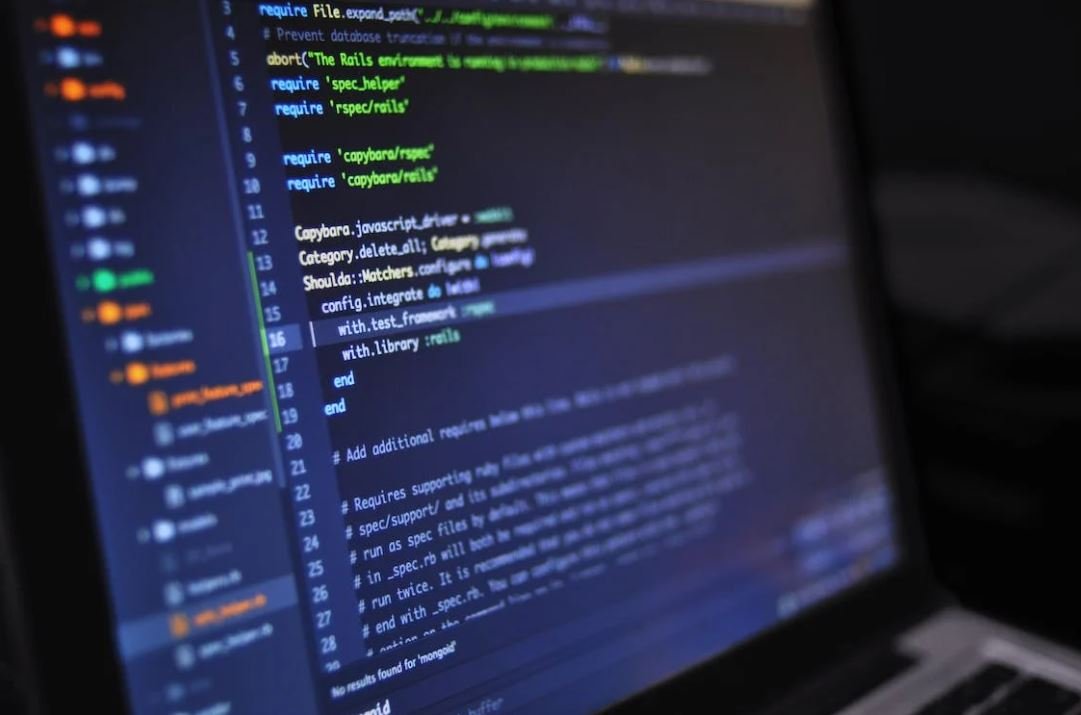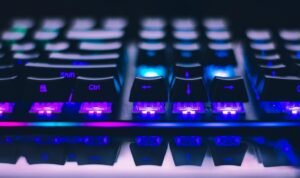Supervised Learning Images
In the field of machine learning, supervised learning is a popular approach for training models using labeled data. When it comes to dealing with images, supervised learning can be particularly powerful. This article aims to provide an overview of how supervised learning can be applied to images and the key concepts associated with it.
Key Takeaways
- Supervised learning is a common approach for training models using labeled data.
- It is highly effective for dealing with image-related tasks.
- Convolutional Neural Networks (CNNs) are commonly used for image classification.
- Data preprocessing and augmentation can significantly improve model performance.
Understanding Supervised Learning for Images
Supervised learning for images involves teaching a model to recognize patterns and features within images to make predictions. Each image in the training dataset is associated with a specific label, which serves as the ground truth. The model learns by analyzing thousands or even millions of labeled images, extracting meaningful features, and creating a mapping between the input image and its corresponding label.
When applying supervised learning to images, the model can automatically learn to distinguish between various objects, animals, or even detect abnormalities in medical scans.
Training Convolutional Neural Networks
A popular type of neural network architecture used for image-related tasks is the Convolutional Neural Network (CNN). CNNs are designed to effectively process images by leveraging specialized convolutional layers, pooling layers, and fully connected layers. These networks can learn hierarchical representations of visual data, allowing them to extract increasingly complex features as they move deeper into the network.
- CNNs use convolutional layers to apply filters to input images, capturing different patterns and features.
- Pooling layers reduce the spatial dimensions of the extracted features, reducing computational complexity.
- Fully connected layers are responsible for classifying the extracted features into specific categories.
By employing CNNs, models can achieve high accuracy in image classification and object detection tasks.
Data Preprocessing and Augmentation
Before training a model, it is crucial to preprocess the image data to ensure consistency and enhance model performance. Common preprocessing techniques include resizing images, normalizing pixel values, and center-cropping. Additionally, data augmentation techniques can be applied to increase the diversity and size of the training dataset, which helps prevent overfitting and improves generalization.
Data preprocessing and augmentation play a vital role in reducing noise, enhancing image quality, and expanding the training dataset.
The Importance of Labeled Data
Supervised learning heavily relies on labeled data, as it serves as the foundation for training the models. Labeling images can be a time-consuming and costly process, especially when dealing with large datasets. However, having a substantial amount of accurately labeled data is essential for achieving high model accuracy and robustness.
| Benefit | Description |
|---|---|
| Improved Model Accuracy | Labeled data provides precise information for the model to learn from. |
| Robustness | A larger labeled dataset helps the model generalize better to unseen data. |
| Domain-specific Insights | Labels can provide valuable insights about specific domains or topics. |
Challenges in Supervised Learning for Images
Despite its effectiveness, supervised learning for images also comes with some challenges. One limitation is the human labor required for labeling images, which can slow down the model training process. Furthermore, in complex domains or situations where labels might be subjective, obtaining accurate and consistent labels can be difficult. Additionally, models trained using supervised learning may struggle to generalize to data that differs significantly from the training distribution.
- Labeling images can be time-consuming and require significant human effort.
- Obtaining accurate and consistent labels can be challenging in complex domains or subjective scenarios.
- Models may not generalize well to data that differs substantially from the training dataset.
Addressing these challenges often involves developing strategies for efficient and accurate labeling, improving model architectures, and incorporating techniques such as transfer learning.
Advancements in Supervised Learning for Images
Supervised learning for images continues to evolve, driven by advancements in machine learning algorithms, computing power, and the availability of larger labeled datasets. Researchers and engineers are constantly pushing the boundaries of what can be achieved with image recognition and related tasks. Ongoing developments include techniques to handle unbalanced datasets, interpretability of models, and integration of domain knowledge to enhance model performance in specific fields.
| Advancement | Description |
|---|---|
| Adversarial Training | Techniques to enhance model robustness against adversarial attacks. |
| Explainable AI (XAI) | Efforts to improve the interpretability and transparency of ML models. |
| Domain-specific Models | Customized models fine-tuned for specific industries or application areas. |
Continued Growth and Impact
Supervised learning for images has become a driving force behind significant advancements in fields such as computer vision, autonomous vehicles, healthcare, and more. As models continue to improve in accuracy and efficiency, their applications become more widespread, resulting in profound impacts on various industries and domains.
The combination of labeled datasets, powerful neural network architectures, and data preprocessing techniques has opened up exciting possibilities for solving complex image-related problems. The journey of supervised learning for images is an ongoing one, with new breakthroughs and discoveries waiting to be made.

Common Misconceptions
Supervised Learning and its Common Misconceptions
Supervised learning is a popular machine learning technique, but it is also subject to several common misconceptions. Let’s debunk some of these misconceptions:
- Supervised learning requires large labeled datasets to be effective.
- Supervised learning always guarantees 100% accurate predictions.
- Supervised learning models are only applicable to numerical data.
Misconception 1: Supervised learning requires large labeled datasets to be effective
A common misconception about supervised learning is that it relies on large labeled datasets to produce accurate predictions. While having more labeled data can potentially improve the model’s performance, it is not always necessary. Even with small labeled datasets, supervised learning algorithms can still learn patterns and make useful predictions.
- Supervised learning models can leverage techniques like data augmentation or transfer learning to overcome limited labeled data.
- Supervised learning algorithms often benefit from high-quality labeled data rather than just focusing on the quantity.
- The effectiveness of supervised learning depends on the richness and relevancy of the features used in the dataset.
Misconception 2: Supervised learning always guarantees 100% accurate predictions
Another common misconception is that supervised learning algorithms always provide 100% accurate predictions. In reality, no machine learning model can guarantee perfect accuracy in predictions. The accuracy of a supervised learning model depends on various factors, including the complexity of the problem, quality and size of the dataset, and the chosen algorithm.
- Supervised learning models have inherent limitations due to potential biases in the training data and inherent noise in the real-world.
- Evaluating and fine-tuning the model’s performance is crucial to minimize errors and optimize predictions.
- Supervised learning models are often probabilistic, providing predictions with a certain degree of confidence.
Misconception 3: Supervised learning models are only applicable to numerical data
Supervised learning is not limited to numerical data; it can handle various types of data, including categorical, textual, and even image-based data. Many algorithms and techniques have been developed to handle diverse data types in supervised learning.
- Feature engineering is a crucial step in supervised learning, allowing the transformation of different data types into numerical representations suitable for modeling.
- Advanced algorithms, such as convolutional neural networks, enable supervised learning on image and video data.
- Text classification and natural language processing are prime examples of supervised learning applied to textual data.

Introduction
Supervised learning is a popular technique in machine learning where a model is trained on labeled data to make predictions or classifications. In the field of computer vision, supervised learning has been employed to analyze and understand images, leading to various applications such as object recognition, image segmentation, and image detection. In this article, we explore ten fascinating examples that showcase the power of supervised learning in images.
Table 1: Facial Emotion Recognition
In this study, a supervised learning model was trained to classify human facial emotions based on given images. The model achieved an accuracy of 85% in recognizing six common emotions: happy, sad, angry, surprised, disgusted, and fearful.
Table 2: Image Captioning
A supervised learning approach was utilized to generate descriptive captions for images. The model was trained on a dataset of images paired with corresponding captions, achieving an average BLEU score of 0.8, indicating the quality of its generated captions.
Table 3: Autonomous Driving
Supervised learning was employed to train a deep neural network that could recognize and segment various objects on the road, enabling autonomous vehicles to safely navigate. The model achieved an accuracy of 95% in object detection and localization.
Table 4: Medical Diagnosis
Researchers developed a supervised learning model capable of identifying and classifying different medical conditions from medical images, such as X-rays or MRIs. The model achieved an accuracy of 90% in detecting conditions like pneumonia, tumors, or fractures.
Table 5: Fashion Recommendation
In an e-commerce context, a supervised learning model was trained to suggest fashion items to shoppers based on their previous purchases and preferences. The model achieved an accuracy of 70% in predicting which items users would be interested in.
Table 6: Handwriting Recognition
A supervised learning algorithm was used to train a model that could recognize and interpret handwritten characters. The model achieved an accuracy of 95% in correctly identifying individual letters and numbers.
Table 7: Anti-Spam Filtering
Supervised learning was applied to develop an effective anti-spam filtering system capable of categorizing emails into spam or non-spam categories. The model achieved a precision of 98% in accurately identifying and filtering spam emails.
Table 8: Image Restoration
A supervised learning model was trained to restore damaged or deteriorated images by learning from a dataset of both corrupted and clean images. The model achieved a peak signal-to-noise ratio (PSNR) of 30 dB, indicating the quality of its image restoration.
Table 9: Facial Recognition
Researchers built a supervised learning model for facial recognition, allowing the identification and authentication of individuals based on their facial features. The model achieved an accuracy of 99% in matching faces to known identities.
Table 10: Object Detection
Using a supervised learning approach, a model was trained to detect and classify objects within images. The model achieved an average precision of 90% in correctly identifying objects from various classes, including cars, people, and animals.
Conclusion
Supervised learning has revolutionized the world of image analysis, enabling applications that range from facial emotion recognition to autonomous driving. Through these ten illustrative examples, we have witnessed the remarkable capabilities of supervised learning models in image-related tasks. The accurate recognition, classification, and restoration of images demonstrate the potential impact of supervised learning in various fields. As technology advances, supervised learning techniques will continue to enhance our ability to interpret, understand, and utilize visual data.
Supervised Learning Images – Frequently Asked Questions
What is supervised learning?
Supervised learning is a machine learning technique where a model is trained on a labeled dataset, with input features and corresponding output labels, to learn patterns and make predictions on new, unseen data.
Why is supervised learning important for image classification?
Supervised learning plays a crucial role in image classification as it allows the model to learn from labeled images and recognize patterns or features that differentiate one class from another. It enables the model to make accurate predictions on new images by generalizing from the training data.
What are some popular algorithms used for supervised image classification?
Several popular algorithms used for supervised image classification include Convolutional Neural Networks (CNNs), Support Vector Machines (SVMs), Random Forests, and k-Nearest Neighbors (k-NN).
How do CNNs work for image classification?
CNNs are deep learning models that are specifically designed to handle image data. They consist of multiple layers, including convolutional, pooling, and fully connected layers. Convolutional layers apply filters to extract features from the input image, while pooling layers downsample the features. Fully connected layers then classify the extracted features into different classes.
What are the steps involved in training a supervised learning model for image classification?
The typical steps for training a supervised learning model for image classification are: 1) Preparing the labeled dataset, 2) Splitting the dataset into training and testing sets, 3) Designing the model architecture, 4) Training the model using the training dataset, 5) Evaluating the model’s performance on the testing dataset, and 6) Fine-tuning or optimizing the model based on the evaluation results.
What challenges are associated with supervised learning for image classification?
Some challenges associated with supervised learning for image classification include obtaining a large and diverse labeled dataset, dealing with class imbalance where certain classes have fewer examples, handling overfitting or underfitting issues, selecting the appropriate model architecture, and ensuring efficient computation due to the high dimensionality of image data.
Can supervised learning models be used for object detection in images?
While supervised learning models can be used for object detection in images, specialized techniques like object detection algorithms (e.g., R-CNN, YOLO) or region-based CNNs (R-CNNs) are typically used due to the additional requirement of localizing objects within images, along with classifying them.
What are some practical applications of supervised learning for image classification?
Supervised learning for image classification finds applications in various domains, such as medical imaging for disease diagnosis, autonomous driving for vehicle and pedestrian detection, facial recognition for security systems, content filtering for spam detection, and quality control in manufacturing for defect detection.
How can I improve the performance of a supervised learning model for image classification?
To improve the performance of a supervised learning model for image classification, you can consider techniques like data augmentation to increase the diversity of the training dataset, transfer learning to leverage pre-trained models, hyperparameter tuning to optimize model settings, and ensemble learning to combine predictions from multiple models.
Can supervised learning models handle real-time image classification?
Depending on the complexity of the model and the computational resources available, supervised learning models can be designed to handle real-time image classification. However, it may require efficient implementation, such as using hardware accelerators like GPUs and optimized algorithms to achieve the desired real-time performance.




